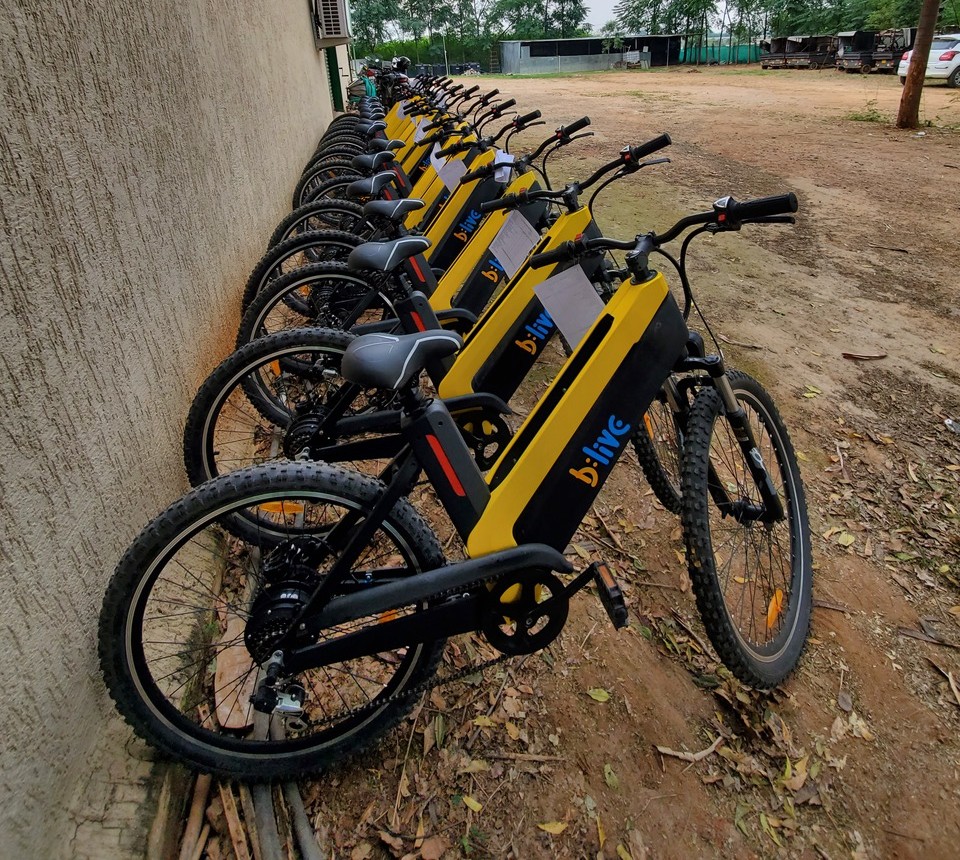According to CRISIL Research, In times like these, every assumption and model needs repeated recalibration because the environment can change rapidly.
“Modelling revenue growth, sector profitability, non-performing assets or any other metric for fiscal 2021 can be perilous because of inadequate information. But as the leading and most trusted credit rating agency in India, form a view we must with whatever is available – and also share with you,” states CRISIL Research.
It is in this backdrop that we are presenting this edition of Ratings Round-Up. The views will be updated as the intensity, reach and duration of the pandemic and its implications become clear. CRISIL Research will continue to communicate those over the coming week and months.
Executive summary
Intensifying Covid-19 pandemic and a looming global recession have cast an unprecedented cloud over the credit quality outlook of India Inc, which has already been impacted by a slowing economy. This has forced CRISIL to slash its base-case GDP growth forecast for fiscal 2021 to 3.5%1 .
The slowing economy is reflecting in rating actions with downgrades (469) outnumbering upgrades (360) in the second half of fiscal 2020, and CRISIL’s credit ratio falling to 0.77 time from 1.21 times in the first half. Amid intensifying credit pressures, timely measures by the RBI to permit banks to offer moratorium on servicing of bank loans until May 2020 comes as a big breather in the immediate term.
Over the near to medium term, however, credit quality trends would be driven by the resilience of companies in terms of bouncing back from the near-standstill demand situation. We foresee India Inc’s credit quality deteriorating in the near term. Our study of 35 sectors, both from manufacturing and services, however, shows sharp variation in resilience in a post-Covid-19 landscape.
While strong balance sheets or continuing demand will support some sectors during the current lockdown, a sharp pick-up in demand thereafter will help. However, some other sectors could be cramped by collapsing discretionary demand or high leverage. These 35 sectors account for over 3,000 firms and over 71% of the debt (excluding financial sector) in CRISIL’s rated portfolio. The key conclusions of this study include:
● Nearly 44% of the debt is in sectors expected to be in the high-resilience category. These include pharmaceuticals, fertilisers, oil refineries, and power & gas distribution & transmission due to the essential nature of products and even government support in some. Telecom and fast-moving consumer goods (FMCG) will see the least demand impact and for some of their sub-segments may indeed benefit from demand uptick during the pandemic-driven disruption
● Nearly 52% of the debt is in sectors expected to be in medium-resilience category. These include automobile manufacturers, power generators, roads and construction. While these sectors have moderate-to-high disruption due to the lockdown, key mitigating factors that cushion the cash flows include the presence of strong balance sheets or liquidity or expected stronger recovery in demand
● Around 4% of the debt in sectors in the least-resilience category. These include airlines, gems & jewellery, auto dealers and real estate due to the discretionary nature of goods and services, and weak balance sheets
In the financial services segment, the lockdown restrictions will have a near-term impact on both collections and fresh loan disbursements. While the RBI moratorium provides some relief on the assets side, it is on the liabilities side that challenges could emerge for non-banking financial companies (NBFCs) with high share of capital market borrowings.
That’s because no moratorium has been announced so far for capital market borrowings (such as bonds and commercial paper) and unless investors expressly consent to restructure the instrument terms, repayments on these will have to be made on time, during a period when collections would be impacted significantly.
NBFCs rated investment-grade by CRISIL have high levels of liquidity and/or enjoy strong parentage. CRISIL’s analysis of the top 100 rated NBFCs indicates that a significant majority have liquidity buffer2 of over 2 times towards the repayment of capital market borrowings due in the next two months.
In terms of the resilience of the underlying asset classes, CRISIL’s analysis reveals that:
● Gold loans will see faster asset-backed recovery despite weaker income profile of borrowers, while home loans will be the least affected as majority of borrowers are salaried
● Vehicle loan and affordable home loan segments are expected to see moderate recovery as economic activity resumes.
● Microfinance, unsecured loans, and small and medium enterprise borrowers (including the loan against property segment) will continue to be impacted severely over the next 9-12 months owing to weak credit profile of borrowers amid a gradual economic recovery
An analysis of CRISIL-rated securitisation transactions shows that over 94% of them would be able to service initially promised cash flows to investors on time even if there is a near cessation in collections in the next two months. Long tenures, flexible payment structures and adequate cash collateral are factors that contribute to high safety in rated transactions.
Securitisation transactions involving shorter tenure asset classes, structures with timely interest and timely principal (TITP) promise to investors and pools with relatively low amortisation, are some pockets of vulnerability. Clearly, even as the pandemic rages, supportive measures from the Government of India and the RBI have eased pressure on cash flow across various sectors for the near term.
As the lockdown is lifted, credit profiles will be back to being driven by fundamentals – namely, pace of economic recovery, demand resilience in respective sectors, and normalisation of working capital cycles. However, the duration, spread and intensity of Covid-19 pandemic will continue to cloud the credit outlook for fiscal 2021 heavily, with rating downgrades likely to far outnumber upgrades. Any further fiscal and/or monetary support measures, as may be necessary, will be key monitorables for any upside to this expectation.
Impact on the corporate and finance sectors
The shock to the global economy from Covid-19 is unprecedented, given the pandemic’s non-linear spread and lack of textbook solutions to deal with it. The global economy is in free fall, making it difficult to predict time horizons of any sort, with the impact being swifter and more severe than any crisis seen before.
Across, demand has fallen off the cliff, with supply disruptions exacerbating matters. In India, the lockdown has intensified pre-existing demand pressures and slowdown. We see two orders of disruption. The first-order effect has come from the global slowdown and trade disruptions, with sectors such as textiles, automobile parts and components, and steel taking a direct hit in their revenue growth as volumes and realisations are under pressure.
The second-order blow has come from the countrywide lockdown and social distancing, driving factory closures, reduced labour wage growth, travel bans, and decimated retail consumption. This has influenced sectors such as retailers, airport operators, hospitality & tourism, and roads. Second-order effects may also include liquidity crunch besides reduced domestic consumption.
Prolonged social distancing could disrupt capital formation and ultimately labour participation and productivity. In this uncharted territory, while many have declared a global recession, quantifying the impact on demand across sectors beyond the obvious prediction of de-growth is still a huge challenge. Fluidity of the current scenario raises questions about the trajectory of the ongoing shock and recovery timelines across various sectors. Nevertheless, it is necessary to estimate the pace of revival and whether there will be any long-lasting structural impact on the economy.
Interventions by government, regulators provide offset The government and various regulators have announced a series of measures to support corporates and individuals during the lockdown. Some of the initiatives include:
The lockdown and subsequent policy measures including the moratorium will have varied impact across different sectors. While corporates benefit by conserving cash, financial institutions are facing a double whammy in terms of limited collections and no moratorium on capital market instruments.
Recovery after the lockdown will also be varied across sectors, depending on the structural resiliency in the sectors and the progress in the underlying consumer class. In the following sections, we attempt to gauge the likely impact on credit quality for various sectors.
For corporates, recovery a function of demand resilience and working capital normalisation
Falling demand and supply disruptions in the wake of the pandemic will impact the performance of companies. Timely policy measures partly address near term issues and may partially support cash conservation for corporates. While these relief measures may partly address the near term issues, extent of contagion and time to lifting up of lockdown remains contingent upon the effectiveness of containment measures.
In the following section, CRISIL has put forth an assessment of extent of revenue loss and level of resilience of a sector to withstand the impact of the pandemic-led slowdown. Our analysis suggests that different sectors will display varying degree of resilience to withstand the impact and bounce back in the post-Covid-19 scenario.
It may be pertinent to note that we are amidst early stages of an unprecedented pandemic and the lockdown associated with it. The views expressed herein are based on present set of assumptions. In a rapidly evolving environment, implications could differ depending on the intensity and duration of the pandemic and economic deceleration. We will continue to communicate our views regularly as the environment evolves.
The big picture is, India Inc is more resilient than it appears Our analysis reveals that while most of the sectors will undergo stress, there are sizable number of sectors where impact could be low.
● Nearly 44% of debt is in high-resilience sectors. These include pharmaceuticals, fertiliser, oil refineries, and power and gas distribution & transmission because of the essential nature of products and government support in some. Telecom and FMCG will see the least demand impact and some of their subsegments may benefit from demand uptick during the pandemic disruption
● Nearly 52% of debt is in medium-resilience sectors. These include automobile manufacturers, power generators, roads and construction. While these are seeing moderate to high disruption because of the lockdown, the key mitigating factors cushioning cash flows include the presence of strong balance sheets or liquidity, or expected stronger recovery in demand
● Around 4% of debt is in least-resilient sectors such as airlines, gems and jewellery, auto dealers and real estate because of the discretionary nature of their goods and services, and weak balance sheets
High sectoral resilience in 44% of rated debt analysed
Nearly half of the sectors (15) may display high resilience due to multiple reasons such as presence of sufficient cash reserves to reach production readiness, continued/uninterrupted production being part of chain of essential goods and services, high prospects of immediate demand restoration as soon as the pandemic restrictions are lifted and government or regulatory support.
Medium sectoral resilience in 52% of rated debt analysed 15 sectors show ‘Medium’ resilience to revenue disruptions. Here uncertainties in demand pick-up post-Covid19 may impact the business over the 9-12 months though mitigants may partly offset the impact.
Low sectoral resilience in 4% of total debt Under the analysis, we found that sectors which may see high revenue disruption and a low resilience of the sector to state of readiness in the post-Covid-19 scenario. That is because of the combination of discretionary nature of products or services and expectation of an elongated demand recovery. These sectors include:
Conclusion The raging pandemic will disrupt normal business operations for most businesses. CRISIL believes 15 sectors are likely to exhibit high resilience, while 20 (accounting for over 55% of the rated debt analysed) fall into medium-to-low resilience category, which would amplify credit quality pressures on India Inc in fiscal 2021.
Supportive measures from the government and the RBI have eased pressure on cash flow across various sectors for the near term. However, duration, spread and intensity of the pandemic will determine the extent of disruption in business performance. Any fiscal and/or monetary support, as may be necessary, will be key upside in this expectation.
CRISIL Limited
(Above articile is prepared by a research report prepared by CRISIL Limited team)












